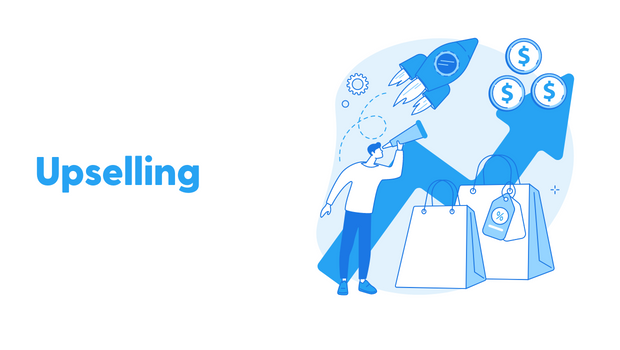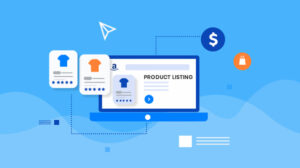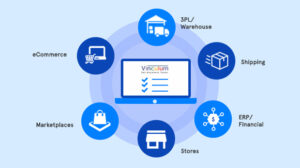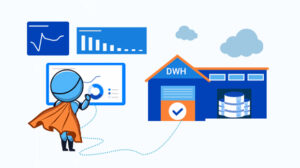Upselling is a sales technique in which a business encourages customers to purchase a more expensive or upgraded version of a product or service they are already considering buying. The importance of upselling for businesses is that it can increase revenue and profits by encouraging customers to spend more money.
Upselling can help businesses differentiate their products and services and create stronger customer relationships by offering them more tailored solutions to their needs.
6 Proven Techniques and Tips for Successful Upselling
- Understand your customer’s needs and preferences. Tailor your upselling approach to their specific interests and needs.
- Build trust and a relationship with the customer. They are more likely to consider an upsell if they trust and feel comfortable with you.
- Use language that emphasizes the value and benefits of the upsell. Instead of just discussing the product, focus on how it will solve a problem or improve their experience.
- Make it easy for the customer to say yes. Offer clear and easy purchasing options, such as online or over the phone.
- Show the customer the total value of the purchase, including any savings or bonuses they will receive by upgrading.
- Train your employees on upselling techniques and regularly review their performance to ensure they follow best practices.
6 Common Upselling Strategies
- Offering complementary products or services: suggesting additional items that complement the customer’s original purchase.
- Highlighting the benefits of upgrading: emphasizing the added value or improved features of a more expensive option.
- Creating a sense of urgency: using limited-time offers or exclusive deals to encourage customers to decide quickly.
- Creating bundles: offering a package deal that includes multiple products or services at a discounted price.
- Creating a VIP or loyalty program: offering exclusive deals or perks to repeat customers to encourage them to spend more.
- Personalized recommendations: using data and customer preferences to recommend products or services that align with their interests.
How to Implement Upselling Techniques in your Business
- Assess your current sales process and identify areas where upselling could be beneficial.
- Train your employees on upselling techniques and best practices.
- Develop a clear strategy for upselling and communicate it to your team.
- Use customer data and insights to personalize your upselling approach.
- Test different upselling techniques and measure their effectiveness.
- Continuously review and adjust your upselling strategy as needed.
It is important to remember that upselling should be ethical, customer-centric, and not pushy or aggressive. The goal is to provide value to the customer and improve their overall experience with your business.
10 Best Practices for Upselling on Your Website
- Make it relevant: Offer upsells that are relevant to the product or service the customer is currently viewing or purchasing. For example, if a customer buys a camera, you could offer a discount on a camera bag or extra lens.
- Keep it simple: Keep the upsell process simple and easy to understand. For example, instead of overwhelming customers with multiple upsell options, present them with one clear, relevant upsell option.
- Use urgency and scarcity: Create a sense of urgency or scarcity to encourage customers to make a purchase. For example, you could offer a limited-time discount on an upsell product, or let customers know that there’s limited stock available.
- Use social proof: Show customer reviews and ratings to increase trust and credibility. For example, you could display a customer’s review of a product and a picture of the customer on the product page.
- Personalize recommendations: Use customer data and purchase history to make personalized product recommendations. For example, you could use data on a customer’s past purchases to recommend similar products or accessories.
- Use exit-intent pop-ups: Use exit-intent technology to display a special offer or upsell to customers who are about to leave your website without making a purchase. For example, a pop-up could appear offering a discount code for a customer’s next purchase if they don’t complete their current purchase.
- Use clear calls to action: Make sure the upsell offer has a clear call to action that tells customers what to do next. For example, instead of saying “learn more” use “buy now”
- Use clear pricing: Make sure the pricing for the upsell is clearly displayed so that customers can make an informed decision. For example, you could display the original price of an item, along with the discounted price as part of an upsell offer.
- Use images and videos: Use images and videos to showcase the value of the upsell. For example, a video could demonstrate how an accessory product works with the main product.
- Test and measure: Regularly test and measure the performance of different upsell strategies to see what works best for your business. For example, try different upsell offers and see which ones result in the most conversions.
By following these best practices and strategies, and using relevant examples, you can increase the likelihood of successfully upselling to customers on your website.
Upselling in Services Industry
Service upselling can be a powerful tool for businesses, allowing them to increase revenue without significantly increasing costs. This can be done by encouraging customers to purchase additional or higher-priced services.
Some effective techniques for upselling services include:
Cross-selling: Suggesting additional services that complement the service a customer is currently receiving.
Upselling with packages: Creating package deals that offer a discounted price when customers purchase multiple services together.
Offering upgrades: Suggesting a higher-priced version of the service a customer is receiving, or offering additional features or services.
Personalizing recommendations: Using customer data and service history to make personalized service recommendations.
How to Provide Better Service and Improve your Bottom Line Through Upselling
- Focus on the customer: Understand the customer’s needs and offer services that align with those needs.
- Communicate the value: Clearly communicate the value of the upsell to the customer so they understand the benefits of purchasing the additional service.
- Train your employees: Ensure your employees are equipped to upsell services effectively by providing training on identifying and communicating the value of upsells.
- Measure and track: Regularly measure and track the performance of your upselling efforts to see what works and what doesn’t.
Upselling in Sales
Upselling can help sales representatives close more deals by offering customers additional value and increasing the perceived value of the product or service. This can be done by suggesting related products or services, offering upgrades, or creating bundle deals.
Some Effective Techniques for Upselling in Sales Include
- Building rapport: Building a strong relationship with the customer can increase their trust in you and make them more open to upselling.
- Identifying needs: Understanding the customer’s needs and pain points can help you identify opportunities to upsell.
- Communicating value: Clearly communicating the value of the upsell to the customer can help them understand the benefits of purchasing additional products or services.
- Handling objections: Being prepared to handle objections and address any concerns the customer may have about the upsell can help close the deal.
How to Improve your Sales Performance through Upselling
- Practice active listening: Pay attention to the customer’s needs and pain points to identify opportunities to upsell.
- Continuously improve your product knowledge: Stay up-to-date with your product or service offerings to be able to communicate the value effectively
- Use data and analytics: Track your performance and use data and analytics to identify patterns and opportunities for upselling.
- Use a CRM: Leverage your CRM to track customer interactions, identify upselling opportunities and follow-up effectively.
Compelling Scripts for Upselling
To be successful with upselling, it’s important to understand the customer’s needs and to make personalized recommendations that align with those needs.
Here are Six Best Practices for using Upselling Scripts
- Understand the customer’s needs: Before making a recommendation, take the time to understand the customer’s needs and preferences. This will help you make personalized recommendations that are more likely to be accepted.
- Be genuine and honest: Avoid using high-pressure tactics or making false claims. Instead, be honest and transparent about the benefits of the product or service you’re recommending.
- Make it easy for the customer to say yes: Make the upselling process as simple as possible for the customer. This may include offering a package deal or providing an easy way for the customer to add on additional items.
- Use positive language: Use positive language and focus on the benefits of the product or service you’re recommending. Avoid using negative language or making comparisons to competitors.
- Use storytelling to help customers visualize how the product or service will benefit them. This can be an effective way to build trust and create a sense of urgency.
- Use upselling scripts as a guide: The goal is to make the customer feel comfortable and to help them make the best decision for their needs.
Example of an Upselling Script
Customer: Hi, I’d like to buy a new phone.
Salesperson: Great! We have a wide selection of phones to choose from. Can you tell me a little bit about what you’re looking for in a phone?
Customer: I need a phone with a good camera, lots of storage, and a long battery life.
Salesperson: Our new phone model has a 12MP camera, 64GB of storage, and a battery that lasts up to 14 hours. And if you buy it now, we’re offering a 20% discount on a case and screen protector. Would you like to take a look at it?
Customer: Sure!
By understanding the customer’s needs and making a personalized recommendation that addresses those needs, the salesperson was able to upsell the customer successfully.
Conclusion
In conclusion, upselling and cross-selling are powerful strategies for increasing average order value and customer lifetime value. Businesses can effectively boost sales and profits by identifying the right customers and using targeted strategies. However, with limited resources, determining which customers are most likely to make additional purchases can be challenging.
This is where Saras Analytics can help you set up tracking conversions across multiple channels and use data-driven techniques such as cohort analysis, RFM analysis, customer segmentation, and predictive analytics to help you make informed decisions for your business growth.
Contact us for a free consultation to learn more about how Saras Analytics can help you boost sales and profits through upselling and cross-selling.













